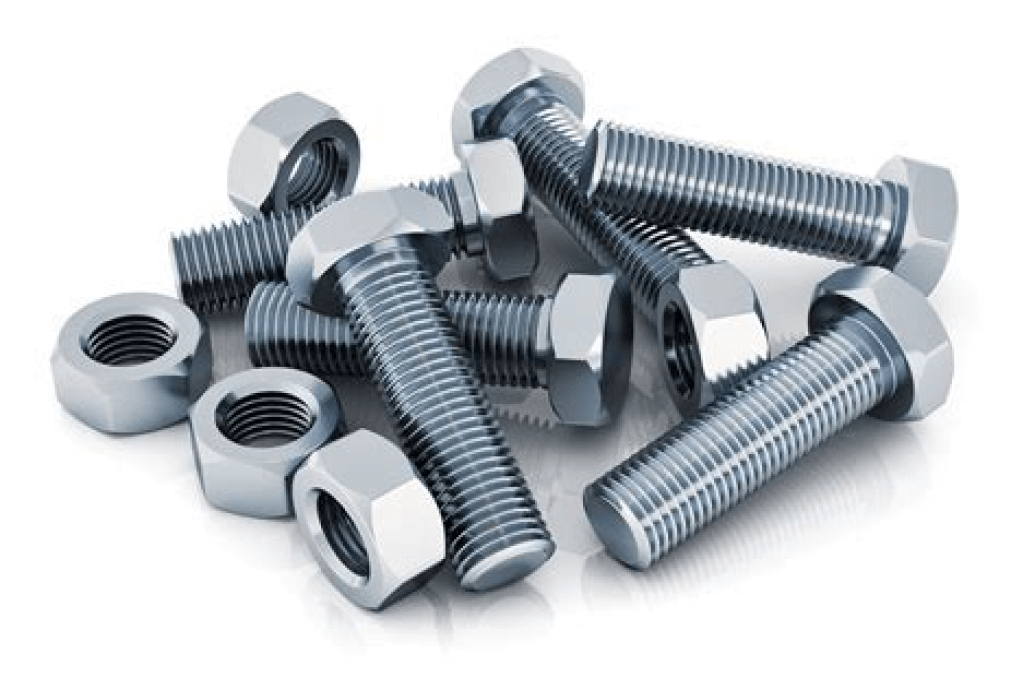
NUT / BOLTS
ALL GRADES OF NUTS & BOLTS
Nuts and bolts, the unassuming yet essential components of engineering and construction, play a monumental role in holding the world together. These simple but powerful fasteners are the backbone of countless structures, machines, and devices, ensuring stability, safety, and functionality in various applications. From massive buildings and bridges to intricate machinery and electronics, nuts and bolts form the robust connections that bring innovations to life. Let’s delve into the world of nuts and bolts, exploring their functionalities, types, applications, and the engineering marvel they represent.
Functionalities of Nuts and Bolts:
Secure Connections: Nuts and bolts provide secure and reliable connections, preventing the disintegration of assembled components.
Adjustability: The threaded design of nuts and bolts allows for adjustability, enabling precise tensioning and alignment of connected parts.
Disassembly and Reusability: Nuts and bolts facilitate easy disassembly, allowing for maintenance, repairs, and component replacement.
Load Distribution: These fasteners distribute loads evenly across connected surfaces, enhancing the overall structural integrity.
Types of Nuts and Bolts:
Hex Nuts and Bolts: Hex nuts and bolts are the most common type, featuring six-sided heads and nuts. They are easy to tighten and offer a balance of strength and convenience.
Flange Nuts and Bolts: Flange nuts have a wider base that acts as a washer, providing a larger bearing surface for improved load distribution.
Square Nuts and Bolts: Square nuts have a square-shaped design, suitable for specialized applications where rotation prevention is necessary.
T-Nuts and Bolts: T-nuts have a unique “T” shape, often used in woodworking and furniture assembly.
Wing Nuts and Bolts: Wing nuts have two large wings, enabling hand-tightening without the need for tools.
Applications of Nuts and Bolts:
Construction: Nuts and bolts are extensively used in construction for assembling beams, frames, and trusses, ensuring the stability and integrity of buildings and structures.
Manufacturing: In manufacturing, nuts and bolts are essential for assembling machinery, equipment, and vehicles, forming the core connections in industrial processes.
Automotive: The automotive industry relies heavily on nuts and bolts for assembling engines, chassis components, and various vehicle parts.
Electronics: In electronics and consumer goods manufacturing, nuts and bolts secure components and housings, contributing to the durability and functionality of electronic devices.
Furniture and Woodworking: Nuts and bolts are used in furniture assembly and woodworking, providing sturdy connections for durable and functional furniture pieces.
Aerospace and Marine: The aerospace and marine industries utilize high-strength nuts and bolts to withstand extreme conditions and ensure the safety of aircraft, ships, and submarines.
Engineering Marvel and Innovation:
While nuts and bolts may appear simple, their engineering is a marvel of precision and design. The threading pattern and material composition are carefully engineered to withstand specific loads, temperatures, and environmental conditions. The importance of thread pitch, diameter, and strength cannot be understated, as these factors directly influence the stability and safety of the connections.
Moreover, innovations in fastener technology have led to the development of specialized nuts and bolts for specific applications. High-strength bolts, corrosion-resistant coatings, and self-locking mechanisms are just a few examples of advancements that have revolutionized the world of nuts and bolts.
Challenges and Advancements:
Despite their ubiquity and significance, nuts and bolts face certain challenges that engineers continue to address:
Corrosion: Exposure to harsh environments can lead to corrosion, weakening the connections over time. Advancements in corrosion-resistant coatings and materials have extended the lifespan of nuts and bolts.
Vibration and Loosening: Vibrations and constant use may cause nuts and bolts to loosen over time. Engineers have developed innovative locking mechanisms, such as thread-locking adhesives and nylon insert nuts, to prevent loosening.
High-Temperature Applications: In industries with high-temperature operations, traditional fasteners may not withstand extreme heat. Advancements in materials, such as heat-treated alloys, allow nuts and bolts to perform under these conditions.
Nuts and bolts may be unassuming, but they are undoubtedly the unsung heroes of engineering and construction. Their significance lies in their ability to create secure connections, ensuring the stability and safety of the structures, machines, and devices that shape our modern world. From massive skyscrapers to delicate electronics, nuts and bolts serve as the sturdy foundation on which countless innovations are built. As technology continues to advance, these seemingly simple fasteners will continue to play a crucial role in driving progress and supporting the infrastructure and advancements of the future.


